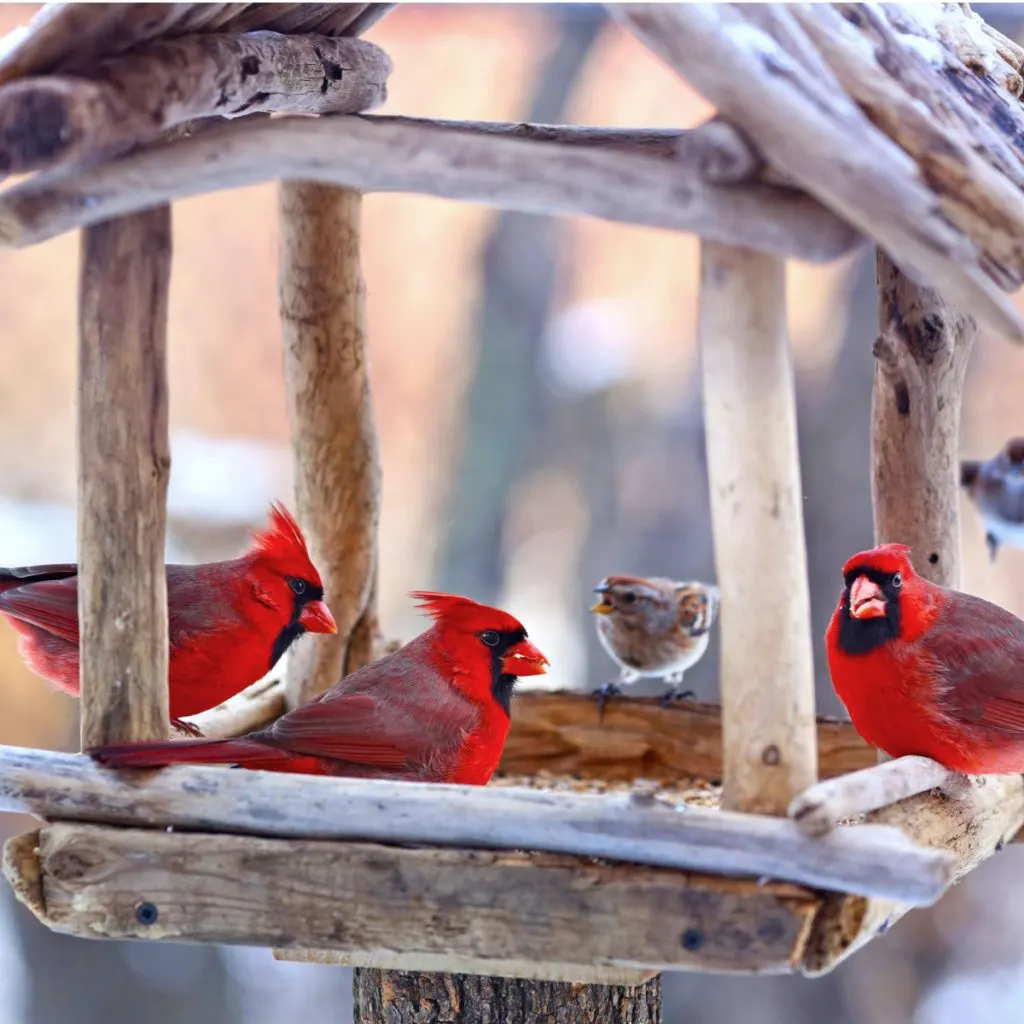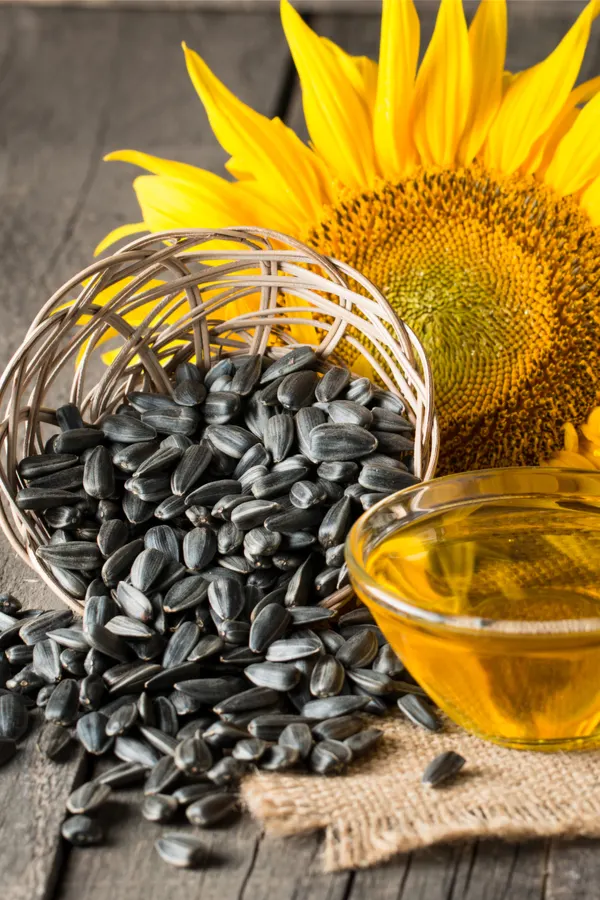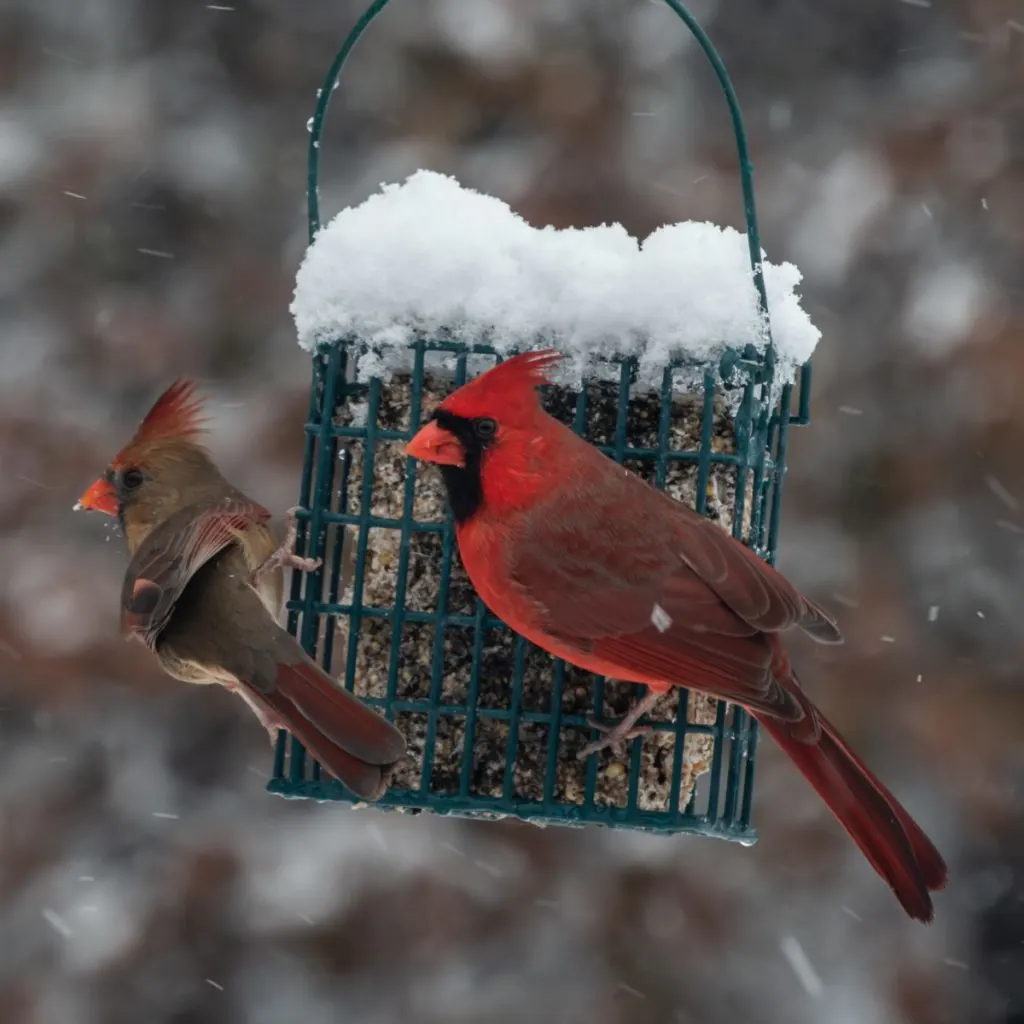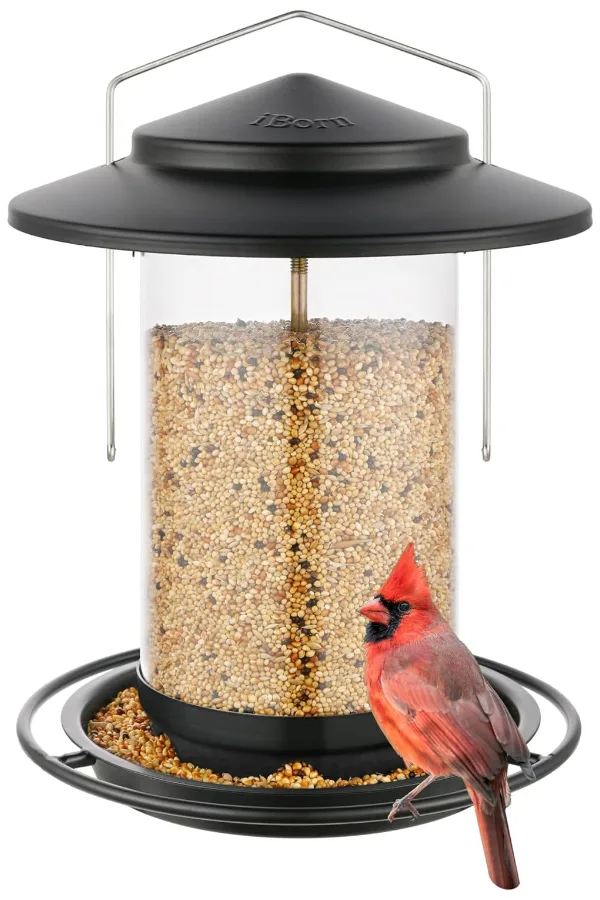Looking for the best seeds and feeds to attract cardinals to your feeders and landscape this winter?
Cardinals, with their vibrant red feathers and loud vocal songs, are a favorite among bird lovers. Although they add life and color to the landscape any time of the year, it’s especially true during the fall and winter months when the backdrop of nature can be less than colorful.
But attracting these graceful birds to your backyard during the winter months with food not only provides big interest for you and fellow bird watchers, but more importantly, provides a critical source of nutrition for the cardinals as their natural food sources become more and more scarce.

So what’s the secret in getting cardinals to visit over and over? It’s simple – just supply your feeders with the food they love and need most! And with that in mind, here are five of the best seeds and feeds that cardinals love. Even better, all of them provide big energy to keep them healthy all throughout the cold season!
5 Great Seeds & Feeds To Attract Cardinals This Fall & Winter!
Although all of the food sources listed below are great for cardinals, when feeding, it’s always a good idea to mix one or more of them together. This not only increases their want to visit, but provides them an overall healthier winter diet.
With that said, one of the best food sources of all to feed cardinals are black oil sunflower seeds. And that is exactly why they are number one on today’s list!
#1 – Black Oil Sunflower Seeds
One of the most nutritious seeds to offer cardinals is black-oil sunflower seeds. These seeds are a top choice for cardinals due to their thin shells, which are easier for them to crack open compared to other types of sunflower seeds.
But even better, the high oil content provides much needed energy to help cardinals survive chilly winter days and frigid nights. Black oil sunflower seeds are also rich in fat and protein, making them a great energy source for birds.
Perhaps best of all, while cardinals love them, these seeds also attract other birds like chickadees, finches, and nuthatches. All of which need winter calories and energy as well! See our article: Feeding Birds In Winter – How To Help Birds Stay Alive & Safe!

Black oil sunflower seeds work best in a bird feeder with a tray or hopper design. With cardinals being a larger bird, they are more comfortable feeding from flat surfaces rather than hanging feeders, which can be difficult for them to perch on. Affiliate Link: Wagner’s Black Oil Sunflower Seed Wild Bird Food
#2 Safflower Seeds – 5 Great Seeds & Feeds To Attract Cardinals In The Fall & Winter!
If you’re looking to attract cardinals while deterring less desirable visitors such as squirrels and chipmunks, safflower seeds are an excellent choice. Cardinals love safflower seeds, but most squirrels and chipmunks do not find them appealing in the least. Why? Because they have a slightly bitter taste – but a taste birds cannot detect.
Safflower seeds are highly nutritious for cardinals. They are packed with healthy fats and proteins that help cardinals maintain their energy levels during winter.
In addition to not attracting squirrels, many larger, more aggressive birds avoid safflower seeds as well. This gives cardinals and some of the smaller bird varieties more feeding opportunities. Affiliate Link: Wagner’s Safflower Seed Wild Bird Food.
Much as with black oil sunflower seeds, safflower seeds work well in traditional tray or hopper feeders. In fact the two are great to mix together.
Check out our podcast below on feeding birds in the winter!
#3 White Millet – 5 Great Seeds & Feeds To Attract Cardinals In The Fall & Winter!
White millet is another great seed that attracts cardinals during the winter. While many people associate millet with smaller birds like sparrows, cardinals enjoy foraging for it on the ground. The grain provides cardinals with valuable carbs, which is a key energy source during colder weather.
White millet is a simple, straightforward food that cardinals can easily consume. In addition, millet is usually less expensive than many other seeds, making it a more affordable option for filling feeders.
As for where to feed millet, cardinals are known to forage for it best while it’s on the ground. For this reason, most bird enthusiasts scatter millet beneath their feeders or near shrubs where the birds have natural protection.
Millet is also perfect for mixing in with other seed varieties in a platform feeder. Affiliate Link: White Millet Wild Bird Seed For Outside Feeding.

#4 Cracked Corn – 5 Great Seeds And Feeds To Attract Cardinals In The Fall & Winter!
Cracked corn is another affordable and nutritious food that cardinals really enjoy. The corn kernels are broken down into smaller pieces, making them easier for cardinals to consume. While whole corn is typically too large for cardinals, cracked corn is perfect for their medium-sized beaks.
Cracked corn is rich in carbohydrates, which is crucial for sustaining cardinals’ energy during cold spells. It is also very versatile. You can use it as part of a seed mix or offer it completely on its own. Though it is a favorite of cardinals, cracked corn will also supply a long list of other winter birds with much needed energy.
Cracked corn can be fed to cardinals on platform and hopper feeders or scattered on the ground. You can usually find cracked corn at local feed stores in bulk.
#5 Peanuts – 5 Great Seeds & Feeds To Attract Cardinals In The Fall & Winter!
Peanuts provide a protein-rich snack that cardinals relish. In the winter, when food is harder to come by, the dense energy that peanuts provide can be lifesaving for these birds. When feeding cardinals, it’s best to always use unsalted, shelled peanuts.

Peanuts are an excellent source of protein and healthy fats, which are essential for the birds’ muscle maintenance and energy. The high energy source is wonderful for helping cardinals maintain body heat and energy levels during freezing temperatures.
Since peanuts are relatively large and filling, less food is wasted compared to smaller seeds that might spill or be overlooked.
Cardinals love peanuts in a tray or platform feeder, where they can perch comfortably while eating. You can also crush the peanuts and mix them with other seeds or scatter them on the ground.
Additional Help For Cardinals In The Fall & Winter – 5 Great Seeds & Feeds To Attract Cardinals
In addition to food, making sure there is a supply of fresh water nearby is critical for cardinals. Birdbaths can freeze in the winter, so consider using a heated birdbath to provide cardinals with a drinkable water source.
For their protection, always try to place feeders near trees or dense shrubs that offer shelter from harsh winds and predators. Evergreens are particularly useful for providing safe hiding spots and coverage during storms.
Last but not least, stay consistent with feeding. Once you start feeding cardinals, try to maintain a steady supply of food throughout the winter. Cardinals, like many birds, are creatures of habit and will return to reliable food sources.
This Is My Garden
Follow Our Facebook Page For Great Gardening Tips And Advice! This Is My Garden Facebook Page
This Is My Garden is a garden website created by gardeners, for gardeners. Jim and Mary Competti have been writing gardening, DIY and recipe articles and books and speaking for over 15 years from their 46 acre Ohio farm. They publish three articles every week, 52 weeks a year. Sign up today to follow via email, or follow along!
